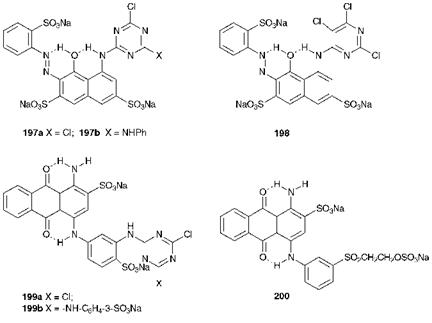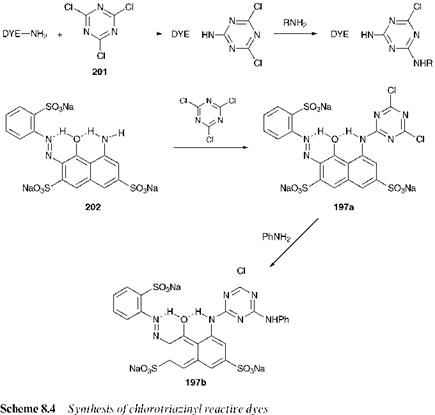A selection of representative chemical structures from the vast range of reactive dyes now available commercially is given in Figure 8.5. Reactive dyes may be prepared in principle from any of the chemical classes of colorant by attaching a fibre-reactive group to an appropriate molecule. In common with most application classes of textile dyes and pigments, most reactive dyes belong to the azo chemical class, especially in the yellow, orange and red shade areas. Examples are typified by the structurally related red monoazo reactive dyes, the dichlorotriazine 197a, C. I. Reactive Red 1, the monochlorotriazine 197b, C. I. Reactive Red 3 and the trichloropyrimidine 198, C. I. Reactive Red 17. Bright blue reactive dyes are commonly derived from anthraquinones. Examples include the triazinyl dyes C. I. Reactive Blue 4 (199a), C. I. Reactive Blue 5 (199b) and the structurally related vinylsulfone dye, C. I. Reactive Blue 19 (200). Turquoise shades are produced using copper phthalocyanine derivatives, while ruby, violet and navy blue dyes commonly make use of the square planar copper complexes of appropriate azo dyes. The dioxazine system may also be used in violet and blue reactive dyes.
|
|
|
|
 20 ноября, 2015
20 ноября, 2015  Pokraskin
Pokraskin 

 Опубликовано в рубрике
Опубликовано в рубрике 